CHamoru/Chamorro Jewelry
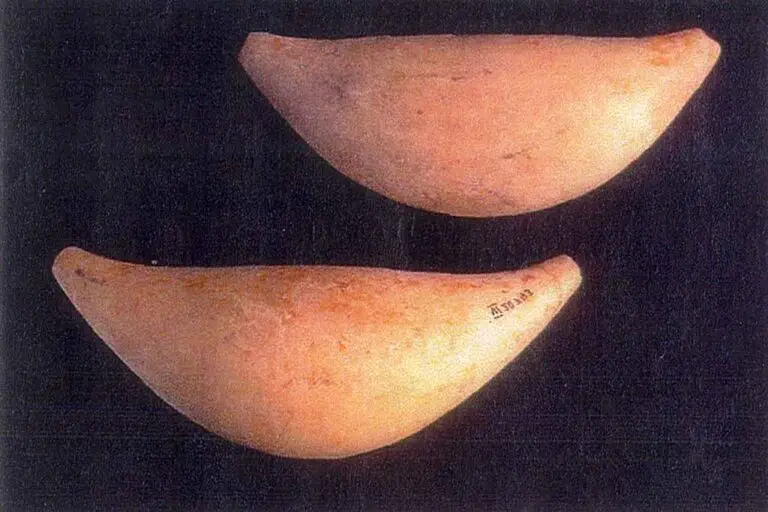
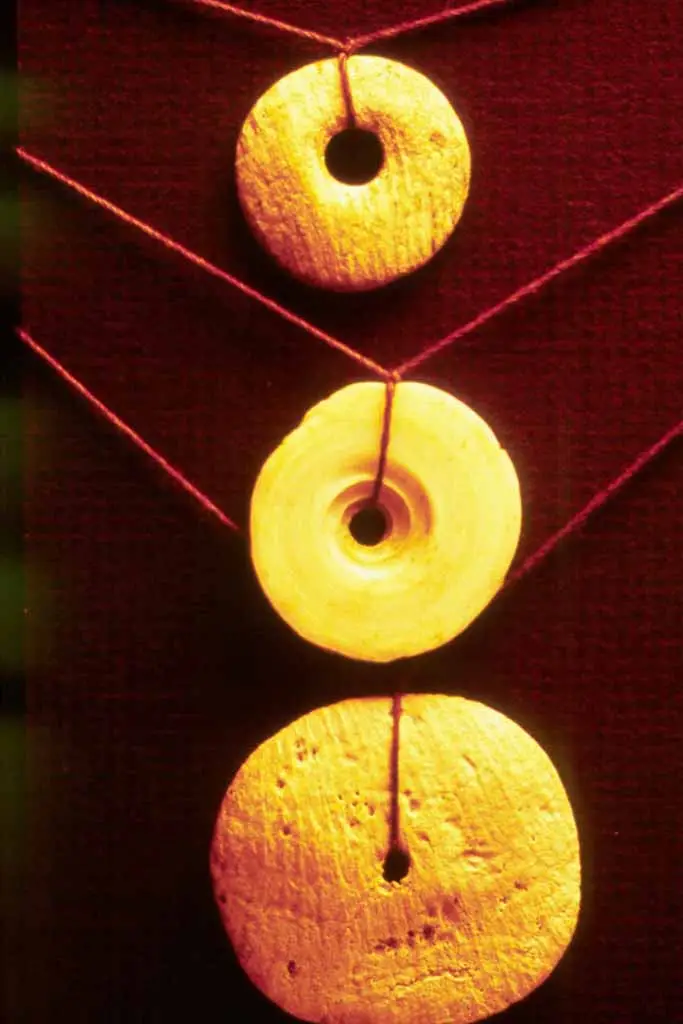
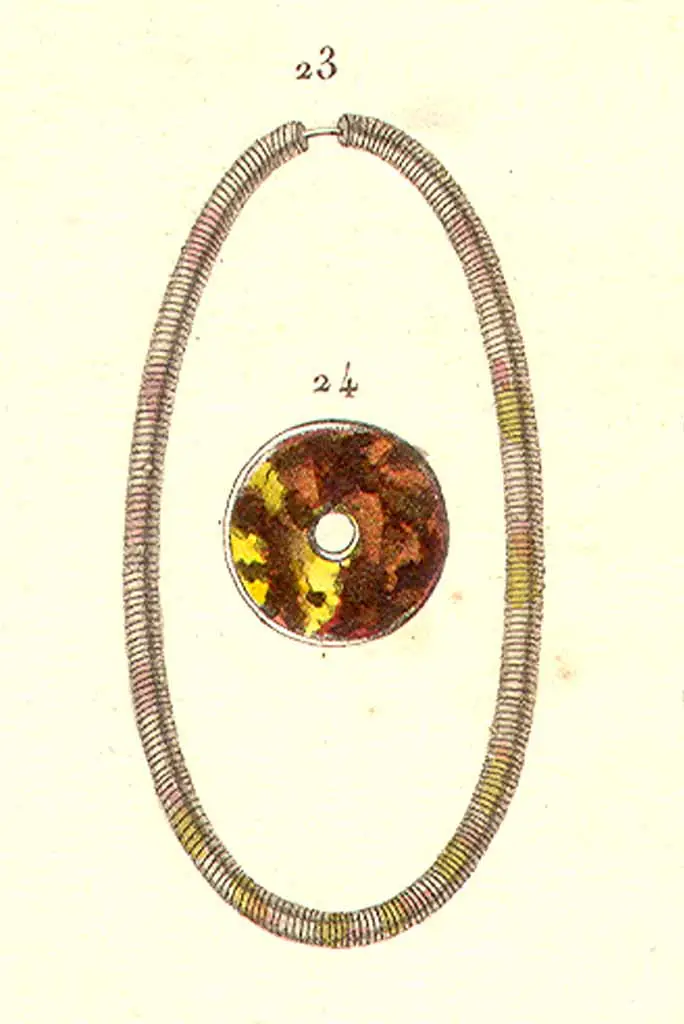
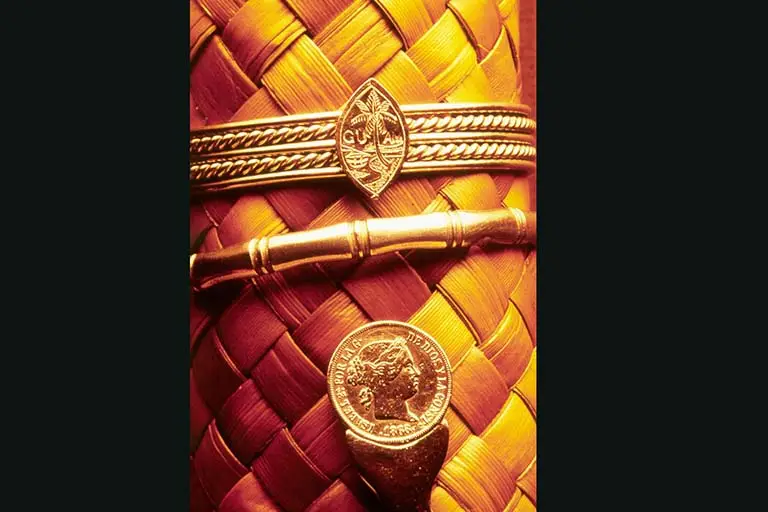
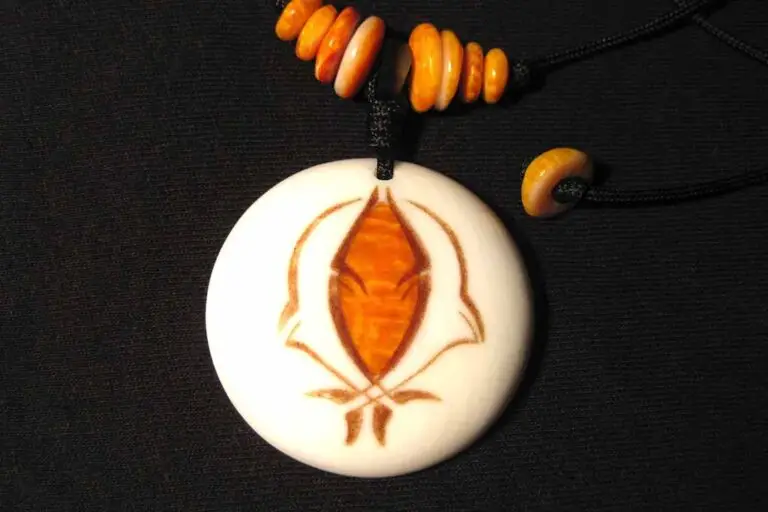
Table of Contents
Share This
Traditional jewelry
Ancient CHamorus/Chamorros donned various styles of necklaces called ålas and salape that were made of seashells and tortoise shell. As is common throughout much of Oceania, these forms of body adornment also served as currency and were often indicative of wealth and prestige.
On the island of Tinian, skilled jewelry makers were noted in a village known as Fanutugan-Ålas or “Place where ålas are threaded.” Most often, the type of shell used for these necklaces was the red Spondylus (spiny oyster shell). In its entirety, the shell includes spike-like projections. These spikes were cut from the main body of the shell and then into segments that formed O-shaped disks. These disks were commonly strung on coconut fiber sennit (coir).
The two main necklace styles were identified according to the sizes of the disks used to produce the jewelry. The first consisted of seashells and/or tortoise shell approximately a 1/2 -inch in diameter (guini) while the second was slightly larger with disks approximately 3/4 of an inch in diameter (lukao hugua). Both styles were fairly long and wound around the neck at least once with the excess hanging to the waist and hip levels. The latter, lukao hugua, may be translated to mean “a necklace worn in a (religious) procession.”
In a unique form of adornment referred to as child’s wealth (guinahan famagu’on), the size of the shell disks begins with 1-inch in diameter and gradually increases to approximately 6-inches in diameter. The two ends were left unattached and it was worn around the neck.
The other major form of adornment consisted of tortoise-shell ornaments worn primarily by women. The value of the necklaces and pelvic aprons was commensurate with the difficulty associated with acquiring the turtle shell. The variations of form include a small plaque worn on the forehead (pinipu) and a pelvic apron (maku dudu) that consisted of a plaque strung with a double cord around the hips. Indicative of high rank, women sometimes wore tortoiseshell disks that were strung with a band of red seashells.
Spanish influence
The arrival of Catholic missionaries from Spain in 1668 and the conversion of CHamorus to Christianity shortly thereafter saw an introduction of more Western forms of clothing and jewelry to the Marianas. The traditional forms of body adornment, made from seashells and tortoise shell, were soon replaced by rosaries worn as necklaces and a new design of jewelry.
The Spanish colonization of the islands introduced new forms of jewelry that eventually became popular amongst the local population. Gold and silver jewelry was most likely introduced by Mexican and Filipino craftsmen called platerus. In addition to the adoption of the rosary bead necklace, women also donned the introduced gold bracelets, earrings, and pendants. This jewelry, which has several locally-fashioned styles have become known as CHamoru gold jewelry, and played an important role in wedding gift rituals during Guam’s Spanish and early American periods.
Gold and silversmiths established a specialized niche within the local population and the skills were passed down through the generations. One such example is the Aflague (Katson) family that produced stylized jewelry that included the easily recognizable bamboo and rosette designs on bracelets, pendants and earrings. Up to the present day, these pieces of jewelry are viewed as status symbols, objects of prestige and are often passed from one generation to another as treasured family heirlooms.
Contemporary jewelry
There has been a resurgence in traditional CHamoru jewelry making in the last decade. It is increasingly common to see men and women wearing carved shells in the shapes worn by their ancestors or symbolic of ancient CHamoru times. Men don clamshell pendants in the shapes of crescents, or sinahi; fishhooks, and latte, which were stone pillars used as house supports for ancient CHamorus homes; while women more often prefer the usually orange-colored Spondylus disc-shaped pendants.
Several local artists specialize in the creation of these unique forms of jewelry. Some of the more well known of these artists are Jill Benavente, John B. Castro, James M. Cruz, George Francisco, Joe Guerrero, Frank Perez, Greg Pangelinan, Johnny “Cake” Siguenza, and Ben Del Rosario (known as Sinahi).
The materials most commonly used by these artists include clamshell, Spondylus shells, bone, and ifit (ifil) wood. All of the artists create their pieces by hand.
Jill Benavente began carving in the mid-1990s. She owns and operates the Guinahan Chamoru shop in Mangilao that serves as a cooperative for a number of local artists. She takes pride in her work and has taken several female apprentices to teach them how to create her unique style of necklaces.
George Gumataotao Francisco started to create his necklaces in 2000 desiring to perpetuate CHamoru culture through hand crafted jewelry like those worn by his ancestors. He used a variety of materials for his pendants including ifit, clam and abalone shells and bone. In addition to the commonly seen fishhooks and sinahi, he created a variety of forms such as intertwined and twisted fishhooks and at times carved the outline into different shapes, such as that of a dolphin, onto the surface of the latte pendant.
Joe Guerrero, who began carving in 1994, prefers to use ifil wood, clamshell, fish bone, and Spondylus shells for his pieces. Guerrero takes pride in personalizing each work for his clients so that their personal history plays a role in determining the final form of the piece.
Frank Perez and Greg Pangelinan formed Chamorro Crafters. Pangelinan began carving at the age of 16, more than 40 years ago. Perez joined Pangelinan after retirement six years ago and, together, they carve a variety of pendants out of wood, bone, shells, stone, and basalt. They are also practicing blacksmiths. Like Benavente, they have apprentices under their tutelage to ensure that the skills of carving and blacksmithing continue.
Like the CHamoru artists, artists from the neighboring Micronesian islands also create forms of jewelry that consist of the shells and other materials found in the natural environment.
Although previously these pendants and necklaces were viewed as indicators of high rank, local residents now create and wear these pendants as an expression of respect and pride associated with the ancient CHamoru and their traditional ways of life.
For further reading
Cunningham, Lawrence J., and Janice J. Beaty. A History of Guam. Honolulu: Bess Press, 2001.
Feldman, Jerome, and Donald H. Rubinstein. The Art of Micronesia: The University of Hawaii Art Gallery. Honolulu: University of Hawai’i Department of Art and Partners, 1986.
Flores, Judy. “Art and Identity in the Mariana Islands: Issues of Reconstructing an Ancient Past.” PhD thesis, University of East Anglia, 1999.
Freycinet, Louis Claude Desaulses de. An Account of the Corvette L’Uraine’s Sojourn at the Mariana Islands, 1819. Translated by Glynn Barratt. Saipan: Commonwealth of the Northern Mariana Islands Division of Historic Preservation, 2003.
Kihleng, Kimberlee S., and Nancy P. Pacheco, eds. Art and Culture of Micronesian Women. Mangilao: Isla Center for the Arts and Women & Gender Studies Program, University of Guam, 2000.
